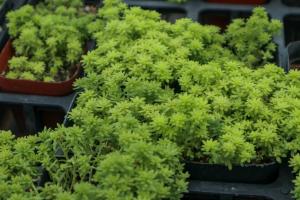How Can a Planted Tree Fall Down?
Planting and growing trees is a vital part of sustaining the environment and creating habitats for various creatures. However, it can be disheartening to see a tree that has been carefully planted and tended to suddenly fall down. There are numerous reasons why planted trees can fall, and knowing these reasons can help prevent untimely tree fall and promote tree health.
Reasons for Tree Fall
One of the main reasons why planted trees fall down is due to weak root systems. Trees can develop shallow root systems due to improper planting, soil-compaction, or damage during the early growth stages. A shallow root system can contribute to the instability of a tree, leading to unexpected falls.
Another reason for tree fall is diseased or decayed roots. Trees can develop root rot or decay due to inadequate drainage, over-watering, or fungi infections. It can compromise the root system, making the tree weak and susceptible to breaking, falling, and ultimately dying.
External factors such as strong winds and storms can also cause a planted tree to fall. Trees that have an unbalanced canopy or limbs that are too long and heavy may not withstand strong winds, leading to tree fall. These external factors can also cause physical damage to the tree, leading to further instability, weakening, and ultimately a fall.
Preventing Tree Fall
The best way to prevent tree fall is to ensure proper tree planting and care practices. Planting trees correctly, ensuring that the roots are deep and have access to water can help establish a stable root system, promoting tree health and longevity. Fertilizing and pruning can further enhance tree health, creating a balance in the tree's structure that can withstand external factors such as wind and storms.
It is crucial to monitor the soil around the tree, checking for adequate drainage and avoiding overwatering. Ditches and grooves dug around the tree can provide outlets for water, improving soil aeration and providing a sturdy base for the tree. Regular inspection of trees for signs of decay, damage, or physical stress can help prevent untimely falls and promote tree health.
The Importance of Healthy Trees in the Environment
Planting and growing trees is a crucial part of sustaining the environment and creating a healthy habitat for various creatures. Trees provide homes for animals, purify the air we breathe, reduce carbon dioxide, and contribute to our well-being. Caring for planted trees, promoting their health and longevity, is essential for maintaining a healthy ecosystem and reducing the risk of tree fall and injury.
In Conclusion
Planting and growing trees is a vital component of protecting the environment, creating habitats for animals, and enhancing our well-being. Understanding the various reasons for tree fall can help prevent untimely falls and promote tree health, leading to sustained benefits for the environment and ourselves. With proper planting, care, and maintenance, trees can live healthy, robust, and upright lives.

 how many times do yo...
how many times do yo... how many planted tre...
how many planted tre... how many pine trees ...
how many pine trees ... how many pecan trees...
how many pecan trees... how many plants comp...
how many plants comp... how many plants can ...
how many plants can ... how many plants and ...
how many plants and ... how many pepper plan...
how many pepper plan...































